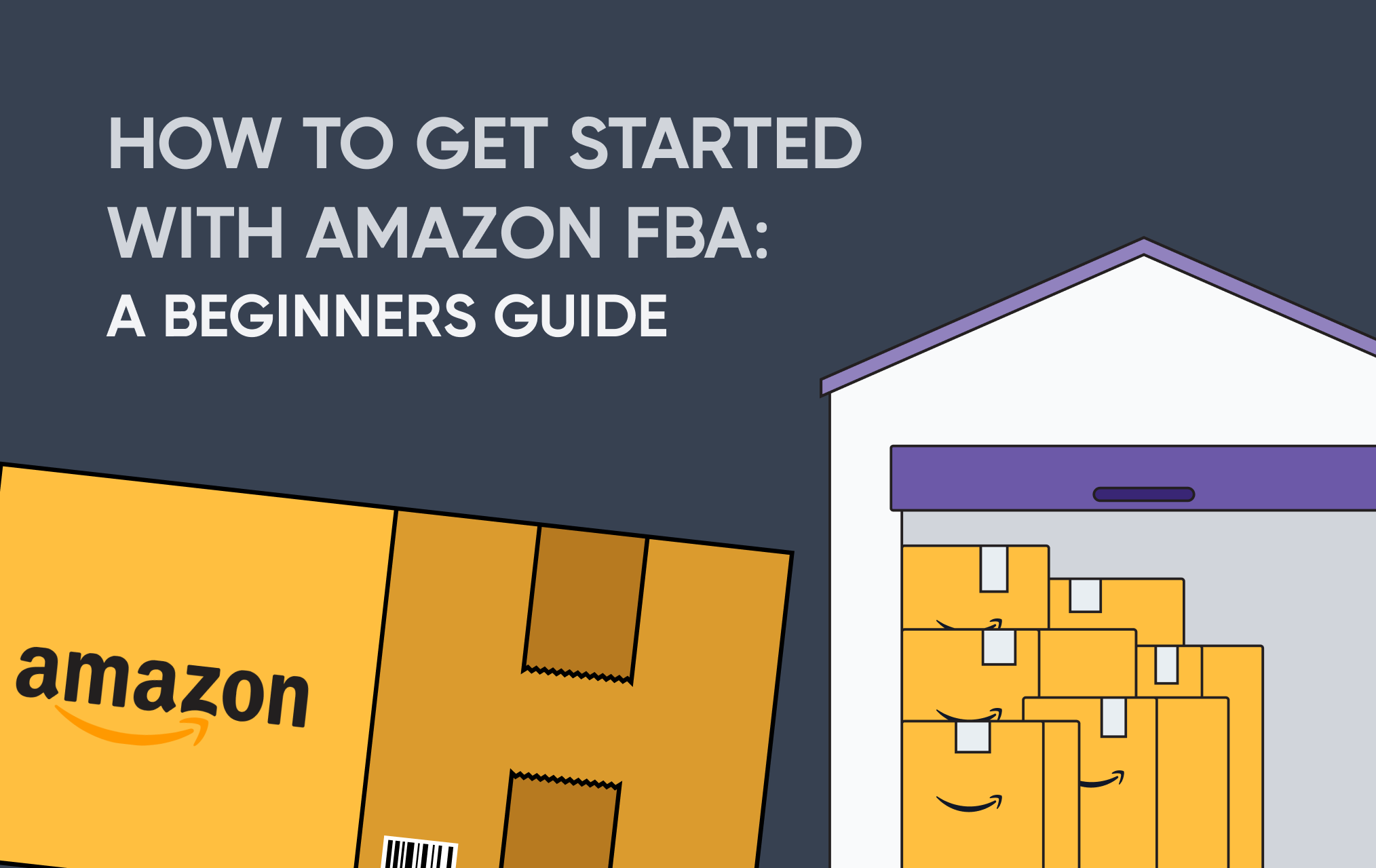
6 mins read
12 mins read

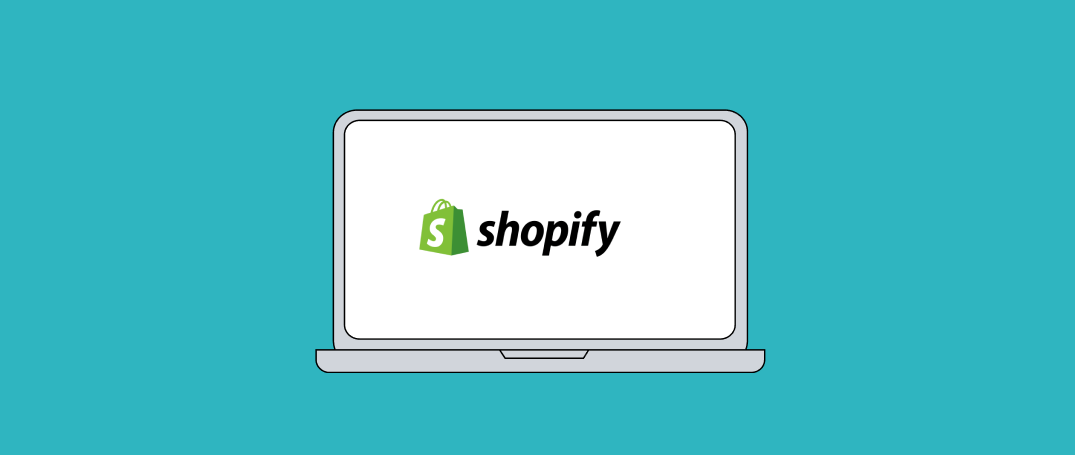
| Key Points: |
No matter how great your product selection is and no matter how user-friendly your website is, you won’t get any traffic if you’re not targeting the right keywords.
Spend some time researching relevant (and high-volume) keywords related to your store, then create content and title tags that target those terms.
This will help you increase your visibility on search engines and reach more potential customers.
There are really two main approaches you’ll want to take when finding keywords for your page.
| 1. General Keyword Research: Keyword tools like Semrush and KeywordFX are great places to start looking for keyword research. Pro tip: focus on your niche, and pick keywords that genuinely matter to your business. 2. Long-tail Keywords: Simply put, long-tail keywords are longer, containing three or more words. If you are selling a “dog leash” for instance, “long red dog leash” may be one of the long-tail keywords that you want to use for your store. |
After you’ve done the hard work and put in a few hours doing keyword research, now you can integrate them into your website. This will help your webpages rank for those terms.
It’s critical that you avoid carelessly using keywords, or overusing them. There is a difference between site optimization and keyword stuffing.
Meta descriptions are a particularly great way to sneak in some extra value, so make sure you optimize them along with your title tags.
| Writing a good meta description: * Keep meta descriptions between 150 and 160 characters for regular pages. * Keep meta descriptions for blog posts between 138 to 148 characters (and other pages with publication dates). * Put the most important information within the first 100 characters. |
You’ll want to ensure that headings are also packed with high-value keywords to ensure that your page comes up during searches.
When it comes to building a top-performing Shopify page, user experience is king.
Potential customers who are enjoying their time on your website are far more likely to buy than those who are struggling to navigate through product pages. In fact, 88% of US consumers said that they wouldn’t shop from a website where they had a bad user experience.
Improving user experience generally comes down to two things: site design and page speed.
Let’s be real: No one likes waiting for a website to load or an image to appear – if it takes too long, they’ll click away.
To keep customers engaged, make sure your site is loading quickly.
Consider optimizing your images so they’re not too large, minimizing redirects and leveraging a content delivery network (CDN).
Doing a tech-stack audit and identifying which plugins and apps are absolutely critical, and which are not, is a great way to reduce clutter on your site and improve loading times.
Here are a few helpful ways to improve your user experience and site performance:
A picture is worth a thousand words, right?
Well, it may not be worth a thousand words, but you can definitely get thousands of dollars of additional revenue by adding interactive, visual elements to your Shopify site.
When potential customers are shopping online, they can’t see or feel your product. That’s why visuals are important; they help your customers get an understanding of what to expect when they buy your product.
Visuals are also a great way to break up massive bundles of text, keeping your page engaging and readable.
There are two points to note here:
The first is to always look to add high-quality visuals of your products to your page. Don’t dig up a 244p picture that you took when you started things in 2012! Hire a professional, or use a top tier camera to take product photos to use on your webpage.
Second, aim to provide your customers with as much visual information as possible. Offer them a 360º view of your product, because in this case, you want to leave very little to the imagination.
Adding visuals will keep your audience engaged, thereby increasing browsing time, which will in turn improve your ranking in search results.
What’s not to love?
When a potential customer lands on your webpage, they need to be able to shop as efficiently as possible.
It’s critical that your navigation bar is as simple as possible to ensure that you are offering a user-friendly shopping experience.

In this example from our company, you get the message pretty quickly.
The services dropdown clearly lists everything that we do, and we have a CTA in the form of a “grow my sales” button that visitors can use to quickly connect with a consultant.
Need another example? Negative, an underwear company, has an amazing site that can be used as a reference for product breakdowns.

When you hover over each category, you’ll notice that products are clearly broken down into categories, which gives shoppers the chance to quickly find what they are looking for.
The overall message? Have a simple navigation bar that doesn’t overcomplicate things.
Give your shoppers the chance to find what they need in seconds, and make those product pages attractive so they spend plenty of time looking at them.
Your product pages need to be three things:
Let me explain.
Your goal as a business is to inform your customers about your product in creative ways.
Why is it the best? What differentiates it? Why should they buy it? And more importantly, why should they buy it now?
You want to inspire confidence in your audience that making a purchase is the right thing to do.
How do you make optimized product pages, you ask?
Here are a few tips:
Bremont does photos right. You can zoom in and see every single pixel of their gorgeous products. Makes you want to pick one up, right?
Having high quality photos goes a long way in helping your products perform better.
Make sure that your images are high resolution, and that they capture all angles of your product.
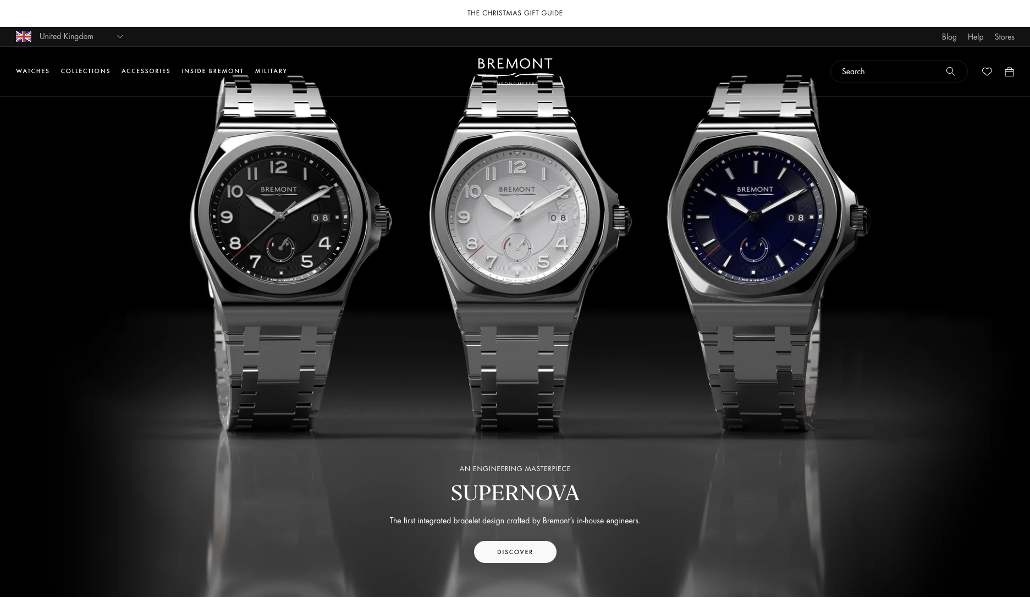
Giving your audience a clear understanding of what they can expect from your product is also critical.
Don’t try to hide anything. Show your customers what they are getting, and from multiple angles.
Having multiple product photos showing the product in 360º builds trust, and will help inspire confidence, moving potential buyers towards a purchase.
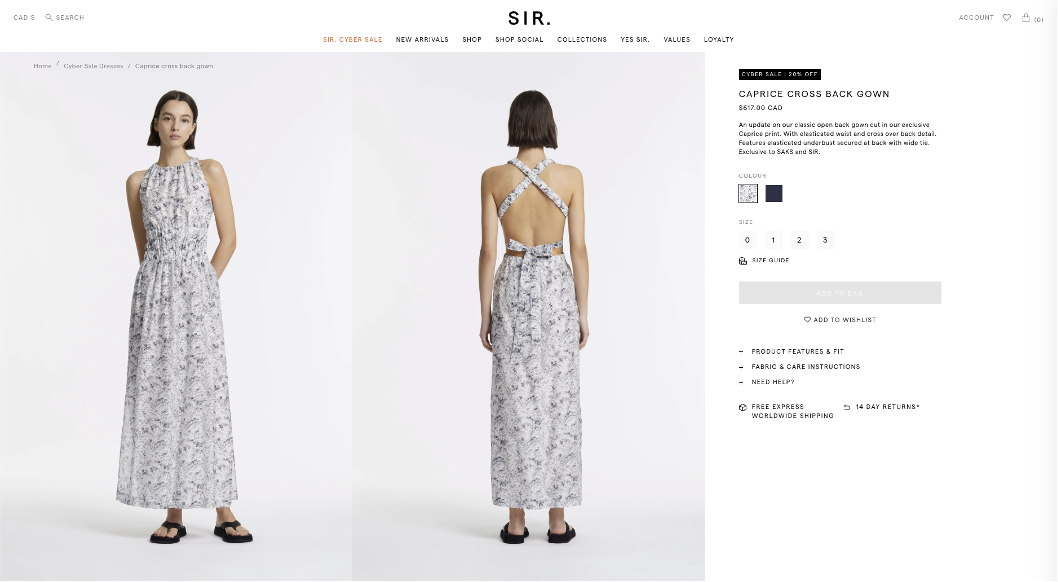
Having an excellent product description is key. Photos are magic, but having a well written, witty product description is another chance for you to build some brand awareness.
Helm is a great example of a company that has nailed down product descriptions.
They do this with a simple and to-the-point introduction that echoes their brand messaging, backed up by a detailed written breakdown of what you can expect from them.
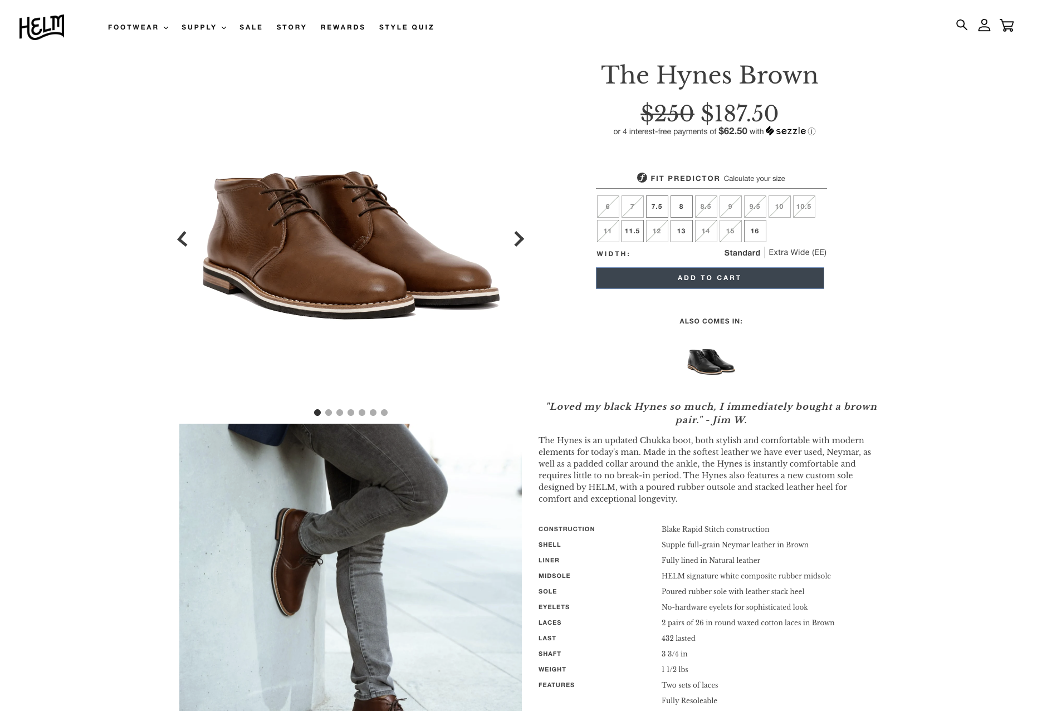
Being able to quickly and simply display product options is also absolutely essential.
You want to be able to show your product off, as well as its variations.
Include an easy to use menu like WP Standard’s, where you can quickly click to see what your chosen color will look like.
Personalizing the customer experience can help you stand out from the competition and make customers feel more connected to your store.
You can do this by making recommendations based on their previous purchases or offering special discounts or rewards for loyal shoppers.
This will create a better shopping experience overall and keep them coming back for more!
Tools like Hubspot and Salesforce can automatically enroll customers in journeys based on their on-page activity, especially if they are signed in. A salesforce development company can help you customize these tools to better align with your business goals and improve customer engagemen
This can offer compelling, personalized experiences that will have shoppers looking for more.
It also has the added benefit of building brand loyalty, and boosting referral traffic.
It is critical that you use social media to create content that drives traffic to your site.
Social media platforms like Facebook, Instagram, Twitter and Pinterest are great ways to get the word out about your store.
Create unique posts and share content relevant to your target audience – not just incessant ads for your store!
Doing so will engage potential customers and increase brand awareness, ultimately leading to more traffic and sales.
Leveraging content marketing is another way to develop content that drives traffic to your site. Content marketing comes in many forms: blogs, articles, ebooks, infographics, guides and more.
The end goal is the same: to drive traffic to your website, and increase conversions once your audience gets there.
Once you have the basics down, it may be wise to explore ways to improve your brand’s overall SEO by creating engaging, insightful content for your users.
Sometimes, the best way to get your customers involved with your store is by having them create content for you!
Ask customers to post reviews, upload pictures of how they use your products, or even just submit ideas for new products. Not only does this help you connect with your customers and make them feel more invested in your store, but it can also give you valuable feedback on how to optimize your business.
Having clear, concise and distinct buttons for your CTAs, or calls to action, is absolutely essential to ensure that your Shopify page is a winner.
A call to action is really a guide - it tells your customer what you want them to do next.
Do you want them to shop gifts? Add the product to a cart? Learn more? You can tell them that by using well-designed CTAs that will wow them.
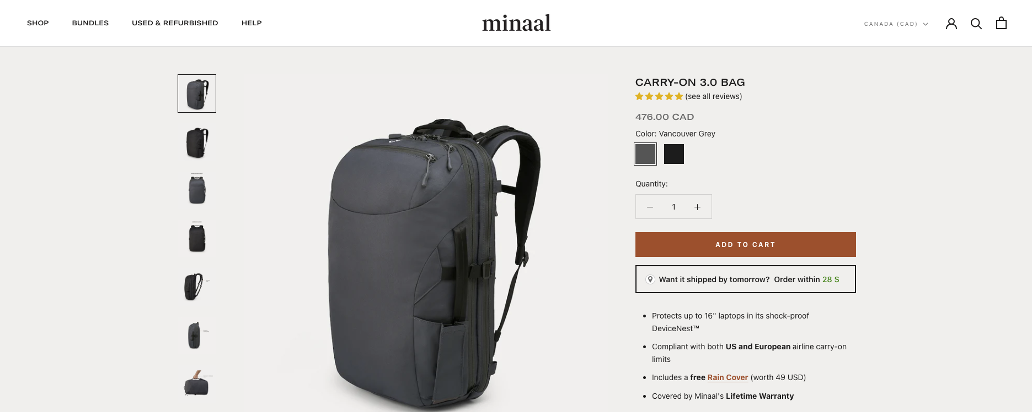
Now, building a button that fits your webpage is much easier said than done. It takes some level of experimentation, but once you find something that works, it can make a huge difference for your page.
| CTA Tips: * Make all CTAs distinct, and choose a standout location on your page that is eye catching * Use simple, easy to understand text * When you can, use bold and capitalized text inside of CTAs * Whatever your decision, make the CTA something that is unique on your page |
No developer and no website is perfect.
As you build out your Shopify website, it is pretty clear that testing is everything. Find ways to break and fix your website.
Button not performing? Fix it. Image loading weirdly? Correct it.
Creating a Shopify site is a labour of love. While you may think it is perfect after you launch it for the first time, take a step back and realize that there is always room for improvement.
Test the elements on your site to ensure that you are offering a refined, excellent product that your customers can enjoy.
A good rule of thumb is to make a list of elements on your site, and test them one at a time.
If you try to optimize and test everything at the same time, trust us, something will fall through the cracks.
What should you add to your list? Here are a few suggestions:
| * CTAs * Headings * Photos * VideosLinks * Navigation bar * Location of forms * The information asked for on a form |
By taking the time to test everything on your site, you’ll have a high quality page that shoppers–and the search engines–will love.
Q: How can I optimize my store for SEO?
A: To optimize your Shopify store for SEO, you should focus on keyword research and placement, content creation, page speed optimization, user experience design and more. Additionally, keep up with the latest industry trends to stay ahead of the competition.
Q: What are some tips for optimizing product pages?
A: Product pages are key to driving conversions on your Shopify store. Ensure you include high-value keywords in product descriptions and titles to help them rank higher in search engine results. Additionally, using visuals like images and videos can also make your product pages more engaging and encourage customers to buy.
Q: Does Shopify have an SEO plugin?
A: No, Shopify does not have an SEO plugin. However, there are many third-party plugins available that can help with optimizing your store for SEO. You can also use Shopify's built-in features, such as product reviews. to improve search engine visibility and drive more traffic to your store.
By following these tips and using the right tools, you can optimize your Shopify store for success and increase conversions in no time! With a bit of creative thinking, you can make sure that customers keep coming back for more and help your business reach its full potential. Good luck!